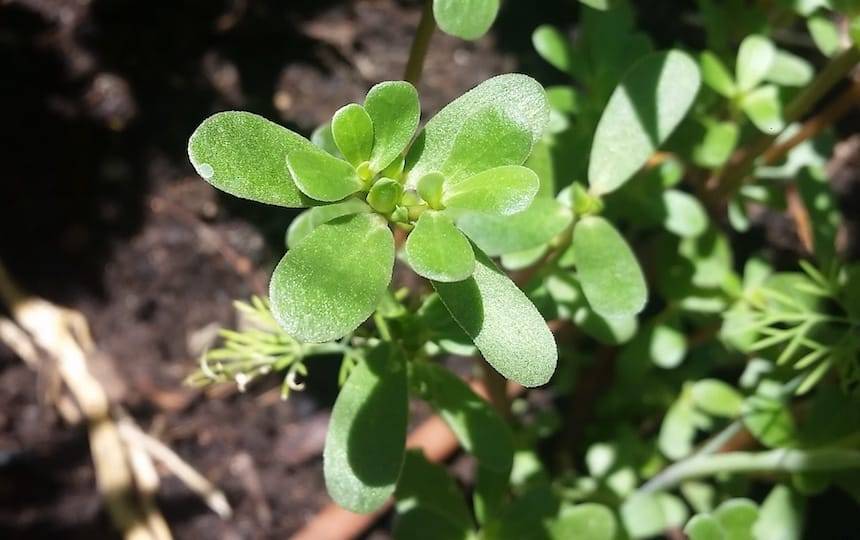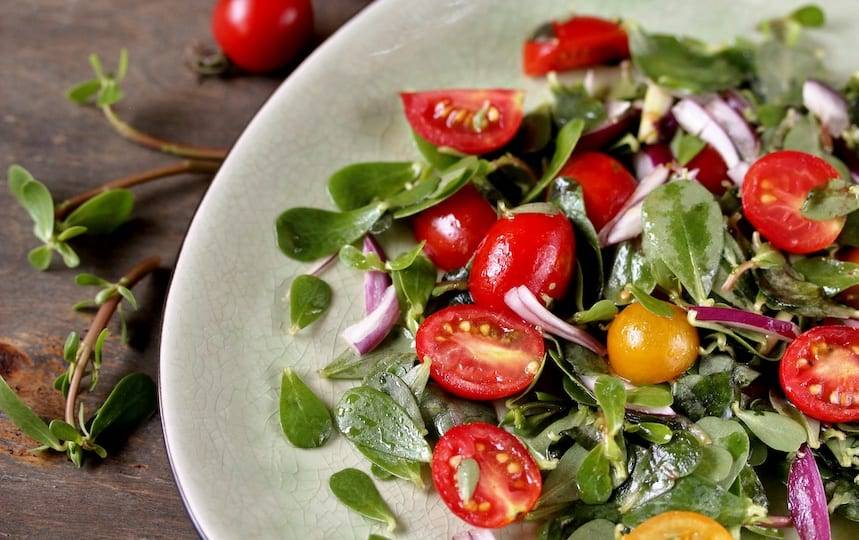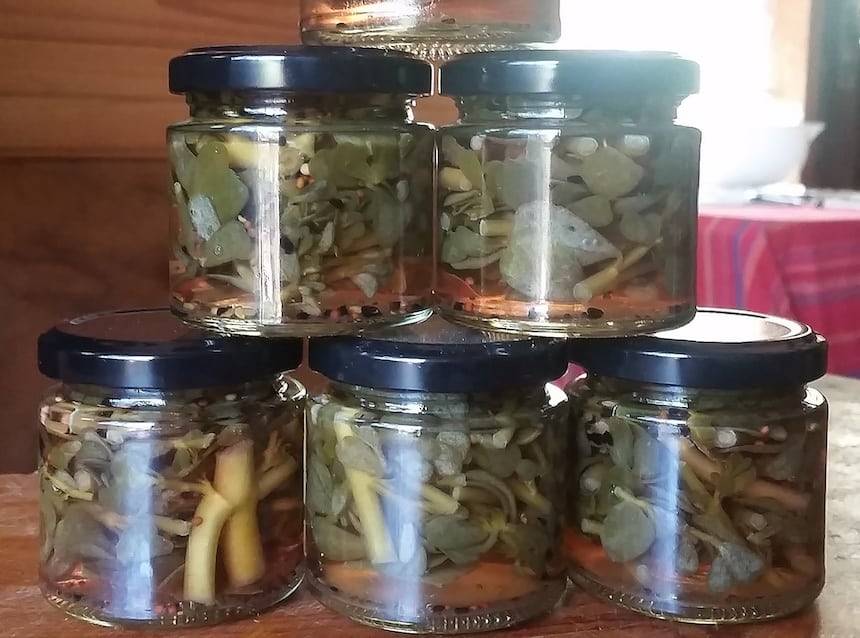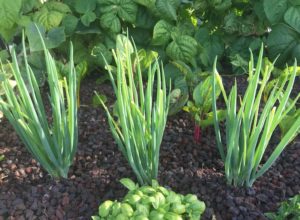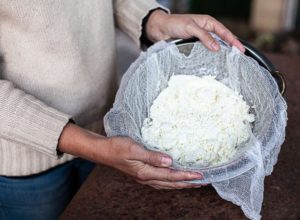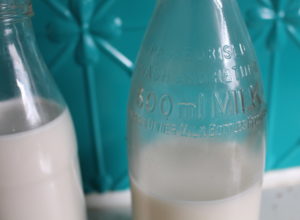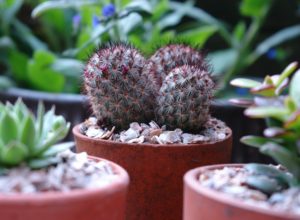Purslane (Portulaca oleracea) can be seen as an annoying weed, but for those in the know, it is an abundant source of valuable vitamins and nutrients and is a tasty food source. Here’s a delicious pickled purslane recipe to try.
Also known as pigweed (not to be confused with pigface, Carpobrotus rossii), it is a vigorous annual plant that grows like a ground cover and can be eaten raw or cooked.
Highly revered in Mediterranean and Eastern cuisines, it is almost unknown to the Australian palate.
Medicinal benefits of pickled purslane
The Latin name ‘portulaca’ derives from the terms ‘potare’ (to carry) and ‘lac’ (milk). In fact, the plant is used by nursing mothers to increase milk production.
It has a high content of vitamins C, A and E, and a good range of B vitamins. It contains the highest amount of omega-3 fatty acids of any vegetable and also a good amount of alpha-Linolenic acid, which helps lower cholesterol, regulate blood pressure and metabolism, and protect against cancer and melanomas.
It’s rich in iron and magnesium and also contains calcium and potassium.
Culinary uses
Purslane can be eaten raw or cooked, and is very adaptable to any dish that calls for greens. It is very common to have it in a salad, usually in combination with onion, chives the plant. It is also good in sandwiches, stir-fries, omelettes, soups and pickles.
It can be eaten freely, however it does contain a reasonable amount of oxalic acid (about the same amount as spinach) – the younger the leaves, the lower the content. If this worries you, keep in mind that a high oxalic acid intake is not a problem as long as it is combined with foods rich in calcium (vegetables, greens and dairy).
Cooking the plant greatly reduces the oxalic acid content. However, purslane is not recommended for the sick, the very young, pregnant women or those with rheumatism or gout.
Pickled Purslane Recipe
Ingredients:
- Freshly picked purslane stems and leaves
- cup of white vinegar
- 1 tbsp of sugar
- 1⁄2 tbsp of salt
- Various seeds such as fennel seeds, mustard seeds and nigella seeds
- Bay leaves
Method:
In the meantime, bring the vinegar with all the other ingredients to the boil and let simmer for 10 minutes.
Pour the pickling solution over the purslane and fill the jars to the top. Close the jars and let cool upside down.
Wait at least a month before consuming. Enjoy!

